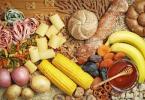The table of fast carbohydrates (simple) is useful to anyone who wants to lose weight or maintain their ideal weight.
Thanks to the fast carbs table (which is necessary in order to effectively burn extra calories and lose weight)You can make the right diet and not completely abandon the usual, delicious food. It is very important to approach the process of losing weight wisely, competently create your own menu, then you will look slim and fit, feel cheerful and light, and you will not have to starve for this. And in order not to fatten and be energetic, you need to abandon the "bad" fast carbohydrates, or at least minimize their amount in your diet.
If you still eat fast carbohydrates, then you need to do it only in the morning until 12:00, because it is at this time that the body digests them best and gives you strength, energy and vigor for the whole day. If you eat fast (simple) carbohydrates, they need to eat for breakfast, slow carbohydrates (complex) for lunch, and for dinner it is better to eat protein foods.
Below in the text, you will find a table of fast carbohydrates, in which there is a list of basic fast carbohydrates, with an indication of the glycemic index in descending order and the content of carbohydrates in them in grams per 100 g of product.
Carbohydrates - These are substances whose molecules consist of oxygen, carbon and hydrogen. In the process of metabolism, they become a source of energy, the most important "fuel" for the body - glucose. As soon as glucose enters the body, it is used for energy, and unused glucose is deposited as glycogen in the muscle tissues and the liver as a reserve or in the form of subcutaneous and intra-abdominal fat. Glycogen is a polysaccharide formed by glucose residues, a storage carbohydrate for the body.
Carbohydrates are divided into fast (simple) and slow (complex):
Fast carbs - These are carbohydrates with a high glycemic index.
Fast carbohydrates have a glycemic index above 50 and cause a sharp rise in blood glucose, leading to hyperglycemia and the abuse of obesity.
What are the main products that are rich in fast carbohydrates, which are extremely harmful for a slim figure and overall body condition? (see full table below):
- sugar and products with its addition;
- ice cream;
- preserves, jams;
- white bread, flour products from white flour (cakes, pastries, cookies, buns);
- sweet soda;
- alcohol (especially spirits and beer);
- fast food;
- fried potatoes or fries;
- soft wheat pasta.
All of the above products nutritionists call poison for the body, of course, not fatal, but gradually doing their job. Daily consumption of products from the above list puts a very large load on the pancreas and produces insulin and endangers the endocrine system. From the systematic use of these products, blood sugar rises and falls abruptly, putting a strain on the body and nervous system, causing drastic mood swings and body energy.
Regarding fast carbohydrates in the form of some fruits and honey, of course they have a high glycemic index, but they also contain many useful trace elements and fiber, so they must be present in the diet, but they must be consumed correctly.
To determine the high-carbohydrate foods without knowing their chemical composition is quite simple, foods with a high content of carbohydrates, high glycemic index are sweet foods and flour products.
It is important to remember that "bad" carbohydrates lead to obesity!
Slow carbohydrates - These are carbohydrates with a low glycemic index.
Slow carbohydrates have a glycemic index below 50 and unlike fast ones, they are absorbed slowly, hence the name, thus glucose is evenly released into the blood without sudden sugar jumps.
These carbohydrates primarily include cereals, whole-grain cereals and some starchy foods - beans, lentils, as well as vegetables and most fruits, which, as already mentioned, are rich in fiber, which is very useful for the body.
In order to simplify the use of knowledge about fast and slow carbohydrates, scientists have introduced the term "glycemic index."
Glycemic index
The ability of carbohydrates to increase blood sugar levels (hyperglycemia), is determined by the glycemic index. This term was first introduced into circulation in 1976 as a result of a unique scientific study, the purpose of which was to create a list of products ideal for patients with diabetes.
The glycemic index or abbreviated (GI) is an indicator of the effect of the eaten product on the change in glucose level (Sahara) in blood. The glycemic index of glucose is taken as 100, and all food products rich in glucose have their own individual GI, which is compared with the GI of glucose and shows the rate of splitting and digestion of carbohydrates by the body.
Fast carbohydrates and exercise, sport
As we already learned, there are fast and slow carbohydrates, they differ in the speed of assimilation because of what they got their names. There are recommendations to use fast and slow carbohydrates in combination with workouts. Slow carbohydrates are recommended to be consumed a couple of hours before the workout, so that they evenly give energy throughout the workout, and fast after workout during the so-called “carbohydrate window”, which lasts about 30 minutes after the end of the workout.
Why is it recommended to eat fast carbs after exercise? - The fact is that after intense physical exertion, a period of recovery of the body begins, fast carbohydrates contribute to the rapid recovery of muscle glycogen.
Of course, if you do not exercise, then slow carbohydrates are much more useful than fast ones, because fast carbohydrates are most often transformed into fat. But not in the case when you train, after an intense workout a small portion of the "right" fast carbohydrates (about 100 grams) not only allows you to restore the energy expended by the muscles, but also awakens the feeling of hunger in the body, and 100 g of fast carbohydrates is enough to quench the feeling of hunger, so the body begins to use its personal reserves in the form of fat, begins to burn fat. Thus, a small portion of fast carbohydrates after a workout will only benefit. Fast carbohydrates are indispensable when you need to recuperate after an intense workout.
And the faster the body and muscles recover, the more intense the next workout will be. Therefore, it is sometimes recommended to eat 100 g of fast carbohydrates not even in the “carbohydrate window”, but within 4 hours after a workout, and within 24 you can eat about 600 g of carbohydrates to recuperate.
The best fast carbohydrates after exercise are honey, jam, dried fruits, sweet fruits. (very good bananas), white rice, pasta soft varieties. Regarding the quantity, everything is individual and depends on the goals you set in the sport. For example, if you want to gain weight, then you need to eat more than to simply satisfy hunger. And if you are afraid that the beneficial effect of training may turn into muscle catabolism (muscle catabolism is the destruction of muscle tissue)i.e. In the negative, then eat as much as required, the body itself will tell.
But still when training, the “carbohydrate window” is the best time to eat fast carbohydrates!
Table of fast carbohydrates (simple)
Table of fast carbohydrates with high GI (GI from 70 and above)
| The product's name | Glycemic index | |
| Dates | 146 | 72,1 |
| Baton (white bread) | 136 | 53,4 |
| Alcohol | 115 | from 0 to 53 |
| Beer 3.0% | 115 | 3,5 |
| Corn Syrup | 115 | 76,8 |
| Ripe watermelon | 103 | 7,5 |
| Baking, cakes, pastries and fast food | 103 | 69,6 |
| Coca-Cola and carbonated drinks | 102 | 11,7 |
| Sugar | 100 | 99,8 |
| White bread toast | 100 | 46,7 |
| Croutons from a loaf | 100 | 63,5 |
| Parsnip | 97 | 9,2 |
| Rice noodles | 95 | 83,2 |
| French fries, fried or baked | 95 | 26,6 |
| Starch | 95 | 83,5 |
| Canned apricots | 91 | 67,1 |
| Canned peaches | 91 | 68,6 |
| Rice noodles | 91 | 83,2 |
| Polished rice | 90 | 76,0 |
| Honey | 90 | 80,3 |
| Pasta made from soft wheat | 90 | 74,2 |
| Swede | 89 | 7,7 |
| Hamburger bun | 88 | 50,1 |
| Premium wheat flour | 88 | 73,2 |
| Boiled carrots | 85 | 5,2 |
| White bread | 85 | from 50 to 54 |
| Cornflakes | 85 | 71,2 |
| Celery | 85 | 3,1 |
| Turnip | 84 | 5,9 |
| Salty crackers | 80 | 67,1 |
| Muesli with nuts and raisins | 80 | 64,6 |
| Condensed milk | 80 | 56,3 |
| Polished white rice | 80 | 78,6 |
| Beans | 80 | 8,7 |
| Candy Caramel | 80 | 97 |
| Boiled corn | 77 | 22,5 |
| Zucchini | 75 | 5,4 |
| Squash | 75 | 4,8 |
| Pumpkin | 75 | 4,9 |
| Bread, wheat, dietary | 75 | 46,3 |
| Semolina | 75 | 73,3 |
| Cream Cake | 75 | 75,2 |
| Squash caviar | 75 | 8,1 |
| Rice flour | 75 | 80,2 |
| Crackers | 74 | 71,3 |
| Citrus juices | 74 | 8,1 |
| Millet and millet groats | 71 | 75,3 |
| Compotes | 70 | 14,3 |
| Brown sugar (cane) | 70 | 96,2 |
| Flour and corn grits | 70 | 73,5 |
| Semolina | 70 | 73,3 |
| Milk chocolate, marmalade, marshmallows | 70 | from 67.1 to 82.6 |
| Chocolates and Bars | 70 | 73 |
| Canned fruits | 70 | from 68.2 to 74.9 |
| Ice cream | 70 | 23,2 |
| Glazed curd cheese | 70 | 9,5 |
| Millet | 70 | 70,1 |
Table of fast carbohydrates with an average GI (GI from 50 to 70)
| The product's name | Glycine index | The carbohydrate content in 100 g. |
| Fresh pineapple | 66 | 13,1 |
| Oatmeal flakes | 66 | 67,5 |
| Black bread | 65 | 49,8 |
| Melon | 65 | 8,2 |
| Raisins | 65 | 71,3 |
| Figs | 65 | 13,9 |
| Canned corn | 65 | 22,7 |
| Canned peas | 65 | 6,5 |
| Juice packaged with sugar | 65 | 15,2 |
| Dried apricots | 65 | 65,8 |
| Unpolished rice | 64 | 72,1 |
| Grapes | 64 | 17,1 |
| Boiled beets | 64 | 8,8 |
| Boiled potatoes | 63 | 16,3 |
| Wheat germinated | 63 | 41,4 |
| Fresh carrot | 63 | 7,2 |
| Pork tenderloin | 61 | 5,7 |
| Bananas | 60 | 22,6 |
| Coffee or tea with sugar | 60 | 7,3 |
| Dried fruits compote | 60 | 14,5 |
| Mayonnaise | 60 | 2,6 |
| Processed cheese | 58 | 2,9 |
| Papaya | 58 | 13,1 |
| Fruit yoghurt | 57 | 8,5 |
| Sour cream, 20% | 56 | 3,4 |
| Persimmon | 50 | 33,5 |
| Mango | 50 | 14,4 |
It is known that carbohydrates are the most demanded substance to ensure normal functioning of the whole human body. As shown by numerous studies, they must be at least half of the total daily requirement of nutrients. They are necessary for regulating the level of glucose in the blood, which affects the work of the brain and helps the body process fats and proteins necessary for increasing muscle mass.
From this it follows that a decrease in the amount of carbohydrates consumed leads to the emergence of various physical and nervous ailments, in particular, a decrease in stress tolerance and efficiency. That is why it is important to learn how to choose carbohydrates for your diet, as well as to understand what properties fast and slow carbohydrates are endowed with. Let's understand together.
Carbohydrates are substances such as sugars. Those who have one unit in their structure are called monosaccharides, but two units are disaccharides. These substances are also called fast carbohydrates, because they rapidly increase the level of glucose in the blood, and besides, they are endowed with a high glycemic index (GI).
Carbohydrates that consist of three or more units of saccharides are called polysaccharides or slow carbohydrates. Polysaccharides slowly increase blood glucose levels and have a low GI.
In turn, each of these types is divided into groups.
Simple carbohydrates
Monosaccharides
Glucose (or as it is called dextrose) is a kind of energy reserve, concentrated in the muscles and liver in the form of glycogen. Glucose is found in foods such as grapes, various berries, citrus fruits, carrots, and corn.
Fructose - this substance can be found in the composition of all types of honey, ripe fruits and vegetables that have a sweetish taste. This product is absorbed somewhat worse than dextrose. Before processing it, the body is forced to "turn" fructose into glucose.
Galactose - found in fermented milk products such as cottage cheese, cheese and others.
Disaccharides
Sucrose - the bulk of this substance is concentrated in sugar (beet, brown and cane). Partially found in ripe vegetables and fruits (no more than 9%).
Lactose is a milk sugar, a one-of-a-kind carbohydrate that is of animal origin. Because of this, it is an extremely valuable component of the diet of each person. This product is found in milk and ranges from two to eight percent, depending on the type of milk.
Maltose is a natural sugar that forms during malt formation and grape fermentation. Maltose can be found in beer, mussels and citrus fruits.
The excess of carbohydrates of this type (various jams, granulated sugar, pastries with cream, etc.) is very detrimental to the state of the body. They immediately get into the bloodstream, which leads to the release of insulin. As a result, you can gain excess weight, or even worse, obesity can develop.
Complex carbohydrates
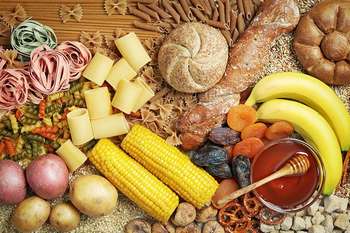 Glycogen - is processed by the liver into glucose. When the body does not receive the right amount of carbohydrates, this product can be formed from proteins and fats. This substance can be obtained from pork, beef, chicken liver. In prosperity glycogen and in yeast cells, as well as in crab meat.
Glycogen - is processed by the liver into glucose. When the body does not receive the right amount of carbohydrates, this product can be formed from proteins and fats. This substance can be obtained from pork, beef, chicken liver. In prosperity glycogen and in yeast cells, as well as in crab meat.
Starch - due to the catalysts is converted into dextrose and maintains its level in the body. These substances are found in potatoes, grains and legumes.
Cellulose - 2/3 of this component passes through the digestive tract and leaves the body naturally, “taking” with it “bad” cholesterol and other harmful substances. It helps protect the intestines from various diseases.
Insulin - is formed from fructose residues. It acts as a carbohydrate reserve for most plants. For example, insulin can be found in the chicory and artichoke cells. This substance is used as a substitute for sugar for people with diabetes.
Pectin - plays the role of stabilizing products. Underperformed fruits and vegetables contain propectin, which, when matured, is converted into pectin.
Complex carbohydrates are substances that are very rich in fiber, contributing to the improvement of the digestive organs. They gradually release their sugar into the bloodstream, helping to maintain a normal level of energy. Thanks to this product, the feeling of saturation with the consumed food is maintained for a long time. With the help of complex carbohydrates, you can reduce the amount of calories that the body needs, which will contribute to weight loss. In addition, polysaccharides will be an excellent source of nutrition for active physical activities.
The ratio of carbohydrates and proteins
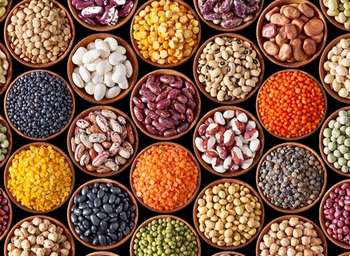 Reducing the amount of carbohydrates consumed, and adhering to a dietary nutrition program, each person must necessarily enter a certain amount of proteins into his menu in order to balance all the beneficial substances.
Reducing the amount of carbohydrates consumed, and adhering to a dietary nutrition program, each person must necessarily enter a certain amount of proteins into his menu in order to balance all the beneficial substances.
Due to this, it is possible to prevent the consumption of nitrogen, the deficiency of which, in turn, leads to disruptions in the work of the muscular system or to a decrease in muscle mass. In addition, the body desperately needs excess protein, which, transforming into dextrose in the liver, is needed to ensure normal functioning of both the brain and the central nervous system.
Slow and fast carbohydrates in food
In order to properly enter carbohydrates into your diet, you need to know what is the glycemic index of a particular product.
The table below contains a list of foods that contain fast carbohydrates.
| Food List | GI indicator | Food List | GI indicator |
| Fried Potatoes | 90 | Caviar Caviar | 85 |
| Watermelon | 65 | Muesli | 90 |
| Honey | 85 | Beer of any kind | 105 |
| Syrup made from rice and wheat | 95 | Glucose syrup | 110 |
| Starch | 105 | Glucose | 115 |
| Maltodextrin | 90 | Potatoes baked in the oven | 105 |
| Rice flour | 90 | Potato starch | 105 |
| Fried Potatoes, French Fries | 90 | Rice porridge | 100 |
| Instant potato fries | 95 | Gluten-free white bread | 100 |
| Celery root | 90 | Cornflakes | 95 |
| Maranta | 80 | Carrots boiled whether steamed | 90 |
| Refined wheat flour | 80 | Corn starch | 90 |
| Turnip | 80 | Rice pudding | 90 |
| Rice milk | 80 | Parsnip | 90 |
| Popcorn without any additives | 80 | Hamburger buns | 90 |
| Sandwich White Bread | 80 | Tapioca (croup) | 90 |
| Rice cakes, popped rice | 80 | Instant rice cereal | 90 |
| Pumpkin | 85 | Mashed potatoes | 75 |
| Corn syrup | 125 | Lasagna | 80 |
| Waffles are sweet | 80 | Donuts | 80 |
| Milk rice porridge | 85 | Air amaranth | 75 |
| Bagels and bagels | 65 | White bread, long loaf, buns | 75 |
| Corn porridge | 80 | Biscuit | 65 |
| Grocery list | GI indicator | Grocery list | GI indicator |
| Fresh tomatoes | 15 | Pearl barley | 25 |
| Fresh cucumbers | 25 | Pasta made from durum wheat flour | 40 |
| Onion | 15 | Medium fat milk | 37 |
| Broccoli | 15 | Medium-fat cottage cheese | 35 |
| Fresh white cabbage | 15 | Kefir medium fat | 30 |
| Fresh carrot | 25 | Low fat cream | 35 |
| Canned olives | 25 | Sea kale | 20 |
| Canned olives | 20 | Boiled sausages | 30 |
| Fresh grapefruit | 18 | Smoked sausage | 37 |
| Fresh apples | 25 | Ketchup and other tomato-based sauces | 15 |
| Fresh apricots | 25 | Tomato juice | 20 |
| Fresh oranges | 40 | Kvass | 35 |
| Fresh Peaches | 25 | Wine | 28 |
| Fresh black currant | 20 | Nuts | 20 |
| Dried prunes | 30 | Marmalade | 28 |
| Dried apricots | 35 | Bitter chocolate | 18 |
| Boiled potatoes | 75 | Oatmeal | 70 |
| boiled rice | 75 | Buckwheat porridge | 48 |
| Fresh Persimmon | 60 | Rye flour bread | 70 |
| Fresh melon | 55 | Processed cheese | 55 |
| Fresh bananas | 55 | Chees Feta | 48 |
| Egg-based and vegetable oil sauces | 55 | Sugar free coffee | 50 |
How to use plant substances?
For cooking, which will contain a small amount of simple carbohydrates, you should give preference to food in boiled or baked form. It is necessary to exclude from your diet fried foods and smoked meats. Vegetables in the diet should be fresh or steamed. Fish and meat is baked on the grill (or in the oven) or boiled.
This mode and diet will help the body to normalize the process of assimilation of organic nutrients. Thanks to this method of eating food, you can get rid of extra pounds, as well as normalize the level of insulin in the blood.
Complete abandonment of carbohydrates is strictly prohibited, otherwise it can harm the liver and kidneys, which will lead to a deterioration in the overall health of the person.
Choose only the right foods and stay healthy!
Carbohydrates - the main source of energy for the body. Lack of these substances can lead to constant fatigue and weakness, sleep disorders, deterioration of mental and physical activity. There are a number of diets that recommend minimizing the amount of carbohydrates in the diet, but it is worth understanding that such a menu can be dangerous for the body, including metabolic processes. Carbohydrates provide the energy needed to break down fats. If they are correct, in order to assimilate them, the body will need to try - it contributes to weight loss. However, carbohydrates and carbohydrates are different. Not all of them are so beneficial for body shape and health, so let's consider what kind of carbohydrate products for weight loss may include.
Carbohydrates are divided into simple (fast) and complex (slow). Simple carbohydrates, a list of products with a table for weight loss, we consider below, the body breaks down quickly. They are quickly absorbed by the blood, instantly saturating with energy, but grabs it very briefly. They do not quench their hunger, and they represent danger to the figuretherefore, of the total amount of carbohydrates consumed per day, they should be no more than 20%.
Complex carbohydrates, a list of slimming products with which you should also consider, are digested long enough. Their body spends a lot of energy for processing, and they give us their energy resources gradually, so they take them for a long time, and you can quench your hunger for a long time. These products are considered more beneficial for both health and for weight loss, so they should be the main sources of energy in your diet.
Slow Carbs: Food List, Weight Loss Table

Complex carbohydrates, while respecting the right calorie content, will not cause weight gain, but for a long time they will charge you with energy, which is necessary both for mental / physical activity, and for splitting fats in the body. Such products are different. Some contain more starch, which is quickly transformed into glucose, so you should not abuse them. The list of products with healthy carbohydrates for weight loss, containing starch, includes legumes, white rice, buckwheat, semolina, potatoes, bananas, eggplant, white bread, pasta, corn.
More useful are those carbohydrate foods that contain pectin and cellulose. Cellulose is a fiber that does not dissolve. The body does not assimilate it, but under its action it is remarkably cleansed of cholesterol and toxins. It also normalizes blood sugar levels and improves bowel function. Therefore, such a list of carbohydrate foods for weight loss always includes.
Pectins - these are soluble ballast substances that are also capable of binding and excreting toxins, and additionally also accelerate the processes of splitting fats. Foods rich in pectin and cellulose are vegetables, fruits and berries, coarse grains, especially wheat, oatmeal, millet, barley.
Thus, the list of products of long carbohydrates in the table for weight loss includes cereals and cereals, unsweetened fruits and berries, pasta made from durum wheat, potatoes, legumes, sweet potatoes, cereal bars, seeds and nuts. Complex carbohydrates are very important for losing weight. Usually they are included in almost all diets, and only sweet fruits and berries become sources of simple carbohydrates.
Now consider the list of products with complex carbohydrates slimming table.
| Calorie, kcal | Proteins, g | Fat, g | Carbohydrates, g | |
|
Oat groats |
345 | 11,9 | 5,8 | 65,4 |
| Semolina | 326 | 9,5 | 1,9 | |
| Rice cereal | 323 | 7,0 | 0,6 | |
| 334 | 12,0 | 2,9 | 69,3 | |
| Pearl barley | 324 | 9,3 | 1,1 | |
|
Rye bread |
214 | 4,7 | 0,7 | 49,8 |
| Durum wheat pasta | 334 | 10,4 | 1,1 | |
| 303 | 23,0 | 1,2 | 53,3 | |
| Beans | 309 | 22,3 | 1,7 | |
|
Potatoes (raw) |
83 | 2,0 | 0,1 | 19,7 |
| 10 | 0,7 | - | 1,8 | |
| Tomatoes | 19 | 0,6 | - | |
| Zucchini | 27 | 0,6 | 0,3 | |
| 46 | 0,4 | - | 11,3 | |
| Oranges | 38 | 0,9 | - |
Of course, all products containing carbohydrates, the list of products for weight loss did not contain, but the other sources of complex carbohydrates in their properties, calories and BZHU are similar to the above.

Simple carbohydrates
Most simple carbohydrates bear no goodbecause they block the main process for losing weight, namely the process of splitting fat cells for energy with a lack of other resources. How does this happen?
For normal functioning, the body needs energy. She draws it from carbohydrates. If the energy derived from carbohydrate-containing foods is not enough, it has to be taken from its own resources. First of all, it is glycogen stores in muscles and a liver. If it ends, the source is adipose tissue. If the energy comes from carbohydrates, the body first uses it for its own needs, with what's left, it fills the liver and muscles, turning it into glycogen, but the rest becomes adipose tissue.
If we eat complex carbohydrates, the body gets a constant and slow flow of energy. To cover all the needs of its small, but enough to break down fat. And this process is laborious, and also very energy-intensive. In view of this great use of complex carbohydrates for weight loss.
But how do simple carbohydrates affect the body? Fast carbohydrates list of products in the table for weight loss, which we present below, immediately give the body a lot of glucose. Part of it is split to cover their own energy costs. The rest fills the muscles with glycogen, but the remnants of a straight road to body fat. After a couple of hours, you want to eat again, although you got a lot of calories. In this case, it makes sense to talk about the so-called "empty" calories, which do not bring anything useful to the body, but easily lead to excess weight.
So, soon you feel hungry and eat again. However, in fact, the body that you ate, no longer needed. He still has enough energy and glycogen (if you have not resorted to heavy physical activity). Accordingly, the eaten goes only to stocks. Simple carbohydrates very poorly satisfy hunger, while covering the need for energy. Therefore, all additional resources are deposited ... Right in fat.
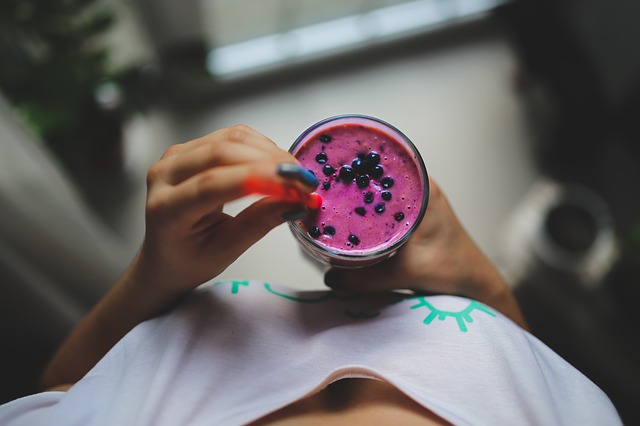
The most harmful simple carbohydrate is sugar. It is absorbed by blood very quickly and gives a large amount of energy, but it ends very quickly. But fructose is considered a useful simple carbohydrate. It does not provoke strong insulin jumps, respectively, is not deposited in fat.
Insulin is a hormone that processes glucose and is responsible for where it goes - muscle, fat, or energy.
List of products with carbohydrates for weight loss that are harmful to the figure, and they are worth to limit, includes the following:
- sugar and sweets, in which there is a lot of it: chocolate, pastries, cookies, waffles, cakes, etc., as well as packaged juices and carbonated drinks;
- sweet dairy products such as store-filled yoghurts, cottage cheese or glazed curd bars;
- most alcoholic beverages;
- snacks like chips, popcorn, and so on.
In addition, there are useful simple carbohydrate foods The list and table for weight loss with which include the following:
- sweets, which mainly include fructose or glucose (honey, marmalade, dried fruits, candied fruits, etc.);
- fruits and berries;
- birch sap, various natural fruit drinks, juices and fruit drinks without sugar;
- red wine.
Here is a table of products carbohydrate for weight loss, which includes popular sources of simple carbohydrates:
| Calorie, kcal | Proteins, g | Fat, g |
Carbohydrates, g |
|
| 374 | 0,3 | 0 | 99,5 | |
| 308 | 0,8 | 0 | 80,3 | |
| Chocolate (milk) | 547 | 6,9 | 35,7 | |
| 299 | 0,8 | 0 | 78,3 | |
| Pastry baking | 297 | 7,6 | 4,5 | |
| 272 | 5,2 | - | 65,9 | |
| Prunes | 264 | 2,3 | - | |
| Bananas | 91 | 1,5 | - |
Another argument against simple carbohydrates is that many of them, for example, chocolate, pastries and other sweets, contain a large amount of fats, and fats are harmful, which are dangerous to the figure and health. Therefore, these carbohydrates in food, a table for weight loss which will help to learn more about them, it is recommended to limit the menu.
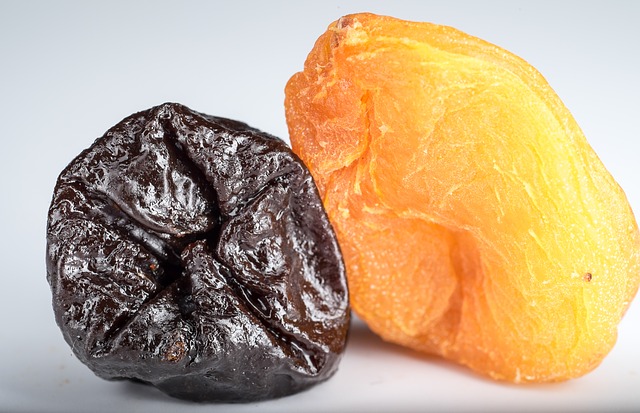
Low Carb Foods
Some diets suggest limiting the amount of carbohydrates in the diet. For example, the popular in sports drying, protein diets Dukana and Atkins. To correctly calculate the allowable amount of certain substances in the diet, you need to examine the list of carbohydrates in products for weight loss. There are products in which carbohydrates are extremely small, and they can be safely used for low-carb diets, just for weight loss or for an evening snack, because, as we know, at this time it is not recommended to eat carbohydrates.
List table slimming products, in which there are very few carbohydrates, looks like this:
| Calorie, kcal | Proteins, g | Fat, g | Carbohydrates | |
| 20 | 1,2 | - | 4,1 | |
| 28 | 1,5 | - | ||
|
White cabbage |
28 | 1,8 | - | 5,4 |
| 31 | 0,9 | - | 3,6 | |
|
Grapefruit |
35 | 0,9 | - | 35 |
| White mushrooms (fresh) | 25 | 3,2 | 0,7 | |
| Chicken's meat | 165 | 20,8 | 8,8 | |
| Skim cheese | 86 | 18,0 | 0,6 | |
| Kefir low fat | 30 | 3,0 | 0,1 | |
| Chicken eggs | 157 | 12,7 | 11,5 |
All these products are mostly low-calorie, and they can be safely used for weight loss. Those who follow the figure should include low-fat dairy products in their diet - there is not enough carbohydrates in them, and at the same time a lot of protein.
So, we already know, carbohydrates are what products, and a table for weight loss will help us to find out their content in one or another food consumed. It should be understood that carbohydrates are not the enemies of a slim figure, but, on the contrary, its assistants. You just need to choose and use them correctly, not forgetting about other important components of the diet. Minimize the amount in the menu of simple carbohydrates and turn it on slow, and then neither extra pounds nor lack of energy threatens you.
Important video about carbohydrates
NOTE
Fast and slow carbohydrates are what every slimming person discovers for himself, starting to make a plan for buying foods. Each product, entering the body, is broken down into simple sugars and increases the level of glucose in the blood. The speed of this process is measured by the glycemic index: the faster the food is absorbed, the shorter it will be satiety.
Therefore, it is worthwhile to divide the list of carbohydrates into fast and slow to get rid of the constant feeling of hunger and glucose jumps. But it is worth remembering that all products with a carbonial group are sugars.
How do they "work"?
Carbohydrates with a high glycemic index (GI) or monosaccharides quickly decompose during digestion and release glucose into the blood: white bread, rice, all kinds of instant cereal, biscuits, biscuits, muffins, sweets, dried fruits.
Splitting products with low GI or polysaccharides is slower, more gradual release of glucose into the bloodstream, and these include most vegetables and legumes.
The glycemic index distributes food more objectively than the division into simple and complex, although the classification has drawbacks. For example, it does not take into account the amount of food. A portion of 25 g and 50 g will cause a different emission of sugar in the blood, because the personal table on GI should include the amount of food and its calculated index.
A special feature of the GI is that it concerns products eaten alone. However, people rarely adhere to a separate diet. Because protein or fat affect the glycemic index of carbohydrate foods and in general the process of digestion.
However, beneficial products can actually be identified using GI
Many people believe that avoiding bad foods allows you to build more muscle and gain less fat in the gym. But studies have shown that the quality of the carbohydrate source does not affect the results.
That is, when gaining mass, there is no point in thinking about the carbohydrate component of the diet, while refusing to eat potatoes or rice:
- bad sugars will not magically lead to a set of fat;
- the quality of the carbohydrate diet does not affect the loss and gaining muscle mass.
How does the type of sugars affect body composition?
Fast carbohydrates only increase blood insulin levels faster, which means:
- satiety will be short-lived;
- hunger will come quickly;
- hunger will occur often.
Without research, it is clear that this mechanism leads to overeating, and it, in turn, affects the amount of excess energy and fat accumulations. The predominance of simple sugars in the diet increases the risk of heart disease and diabetes. Complex sugars can reduce the risk of these diseases.
Knowledge of products with low GI will help to form the basis of the diet, personalized table for weight loss:
- cabbage, onions, tomatoes, eggplants, broccoli, salads have GI - 10,
- red pepper, olives, radishes, sauerkraut - 15,
- cucumbers, fresh apricots - 20,
- cherry, grapefruit - 22,
- cherries and prunes - 25,
- lentils, raspberries, peaches, currants and apples - 30,
- pears - 34,
- carrots, oranges and figs - 35,
- beans, green peas, tangerines, gooseberries and grapes - 40,
- blueberries, blueberries - 42
- beets - 64,
- corn - 70,
- pumpkin, boiled zucchini - 75,
- boiled potatoes and mashed potatoes - 95,
- fried potatoes - 95,
- boiled carrots - 100.
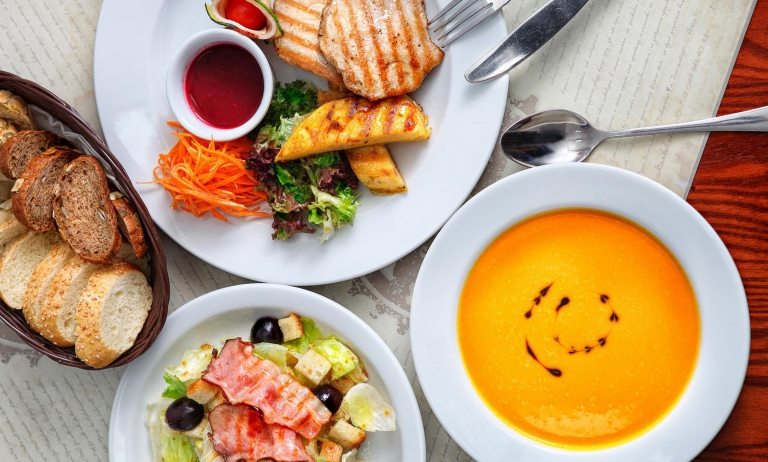
Cereals and cereals from the list of useful products can differ significantly in terms of GI: barley - 22, whole-grain or bran bread - 40, buckwheat, barley, millet, bran - 50, hercules 55, semolina, oatmeal and rye bread - 65. Rice and pasta - 90, pizza, buns, cookies, bagels - 80-100. However, flour when combined with a filling, for example, in dumplings with cottage cheese gets 55 points, and with potatoes - 60. Milk has GI 32, yogurt - 35, but curd, kefir, cheese and cheeses belong to protein products without changing GI.
Similarly, fish and meat products have a zero index, with the exception of liver and ground beef with GI 50. Such a list is hardly suitable for losing weight if fried pork without breading, classified as junk food, has zero GI.
Dark chocolate has GI 22, and dairy chocolate has 70, so the choice on proper nutrition falls on a product with a high cocoa content. Peanuts have GI - 20, walnuts - 15, because they are available healthy fats.
The table of fast carbs with the list of products would look like this: halvah - 70, sugar, chips, soda, watermelon, chocolate bars, dates, - 70, ice cream - 87, honey - 90, beer - 110. harmful fast carbohydrates contain GI above 70 , and you need to reduce to a minimum everything that comes up to the border 60 and lean on complex carbohydrates
GI is affected by culinary processing. Raw cabbage has GI 10, fermented - 15, stewed - 25.
List of sugar consumption rules

- Consume 2-3 g of carbohydrates per kg of body weight daily. They should be 30-40% of daily calorie intake. Limiting polysaccharides in the diet can lead to weight loss due to muscle mass, since muscles need fuel during intensive training.
- Opt for low-GI slow sugars to prevent catabolism and keep blood sugar levels stable. Adequate intake of slow carbohydrates accelerates fat burning, reduces the level of stress hormone.
- Be sure to eat polysaccharides after a night of hunger to cover the deficit of glycogen in the muscles. Breakfast, including protein and complex sugars, protects the body from fat accumulation. The body should get 20-30 g of slowly digestible foods with a predominance of fiber at the beginning of the day to reduce cravings for junk food.
- Properly consume fast and slow carbohydrates before workouts. Before power loads boot - buckwheat porridge, whole grain bread. They will help maintain a stable level of glucose during exercise, prevent a decrease in insulin levels, which improve fat burning. The perfect combination of 20-30 grams of slow carbohydrates and 20 grams of protein. Forget about fast carbohydrates before training - they will lead to a sharp rise and fall in blood sugar, drowsiness and loss of strength.
- Fast carbohydrates after exercise will become a source of easy recovery and will not fall into fat reserves, as they replenish glycogen storage. The ideal option is 30-40 g of fast carbohydrates and 40 g of protein from a protein shake.
- Options: dried fruit and cottage cheese, banana, egg and milk in a homemade cocktail, gainer. Cardio burns fat and glycogen, because the less sugars and insulin will be in the blood before a workout, the more fat reserves will burn. But you can not do cardio on an empty stomach, you should charge the muscles with amino acids in the form of a protein shake, egg white, kefir or yogurt without sugar. Before the cardio body needs from 20 g of protein, the list does not include cottage cheese and lean beef, as they are absorbed for a long time.
- If before the cardio the body needs amino acids to prevent the destruction of muscles, then after the cardio - fast carbohydrates from the list of products, taking into account calories and BJU, to eat about 20-30 grams of monosaccharides and disaccharides in the form of fruits, but not buns and sweets.
- Choose a cheat-mil day when the amount of sugars will be increased by 2-3 grams per kilogram of body weight. A carbohydrate load once a week will help maintain levels of leptin and thyroid hormones, which are reduced on a low carbohydrate diet. Therefore, cheat-mil is needed for losing weight.
- To regulate the level of the carbohydrate component: to increase on the day of training in the morning, but not in the evening, to decrease on days of rest.
Effective training for you!
In many diets for greater efficiency it is recommended to exclude carbohydrates from the daily menu. However, in practice this cannot be done. Even in the chicken breast is some proportion of this component!
Obviously, there are products that are beneficial to the human body, which also belong to the carbohydrate group. Properly recognizing them in your diet is the main task for all people who want to become slimmer.
What is the essence
All carbohydrates differ in the rate of absorption - some are broken down in the digestive system quickly, while others are very slow. It is slow carbohydrates is the best choice for guaranteed weight loss.
There are special tables and a list of products containing complex or slow carbohydrates. Generally speaking, they contain the following products:
- pasta made from durum wheat;
- potato - no matter how strange it sounds, this vegetable is digested slowly;
- legumes - more often beans or peas are introduced into the menu;
- varieties of bread baked from wholemeal flour containing bran;
- various cereals.
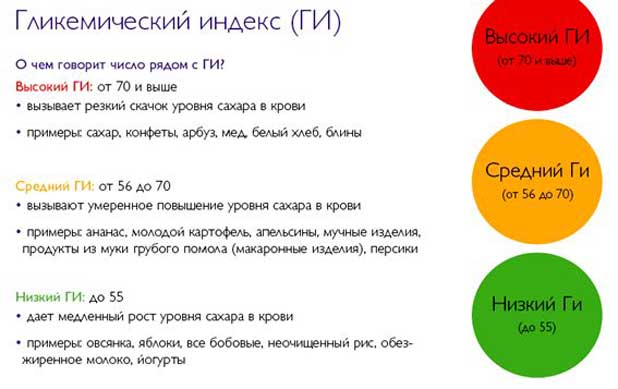
The benefits of such products is to satisfy hunger for a long time - the body starts complex mechanisms of digestion, which have virtually no effect on blood sugar levels.
A peculiar marker in this case is the glycemic index - it is indicated in special tables. Its value shows how a particular product affects human blood sugar levels. For persons suffering from overweight, this figure should not exceed 40 units (according to the table).
The essence of the problem lies in the fact that an excess of carbohydrates, not used by the body as energy, is converted into fats - an emergency reserve “for a rainy day”. And hunger always affects the rise in sugar.
For example, eating sweets, watermelon, white bread or pancakes (their GI is more than 70 units), a person causes a rise in blood sugar and insulin production - hunger is felt after a short period of time, which leads to overeating.
Slow carbohydrates are absorbed within 2-2.5 hours, which eliminates the formation of excess insulin, provoking a feeling of hunger.
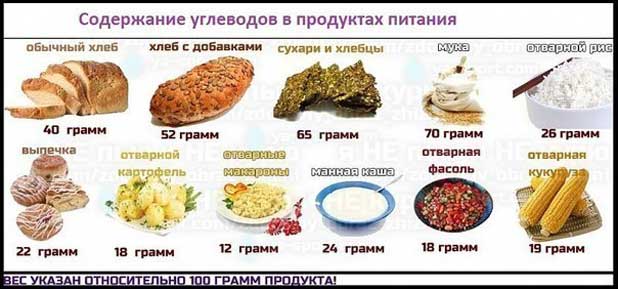
The right products for weight loss
The speed of assimilation of dishes is largely determined by their chemical composition. There are substances that can slow down the process of digestion, such as:
- cellulose (this polysaccharide is found in nuts and legumes);
- glycogen (found in large quantities in seafood, liver);
- insulin (it can be found in chicory and artichoke);
- starch (it is found in most cereals, potatoes and pasta).
To lose weight, you need to use special tables or make your own list of useful products, usually present in the menu, taking into account the glycemic index.

Strive for the complete absence of carbohydrates can not be! Such an approach to nutrition will only worsen health and mood, and then lead to another nervous breakdown and weight gain.
A sensible approach to carbohydrate regulation is:
- avoiding snacks with sweets - it is better to eat nuts or fresh fruit;
- the replacement of pasta with cereals (buckwheat, oatmeal and unprocessed rice);
- replacing mashed potatoes with vegetable stews with little or no potato;
- rejection of baking and white bread - prefers whole-grain varieties.
A useful component of the menu will be the sources of proteins - eggs, lean meat and fish.
Proper breakfast and good cereals
Do not underestimate the importance of breakfast. First, it must be! And secondly, in the morning menu there are necessarily porridges. Preferably from the groats with a shell, they have lower GI.
Important: refuse a small piece of butter in the porridge is not worth it. This is the only source of polyunsaturated acids, which are not produced by themselves in the body.
Also, cereals can be eaten for a whole week, which will get rid of at least 2-3 kg of excess weight. With this diet, each type of cereal has its own day (for example, Monday - buckwheat, Tuesday - rice, and so on).
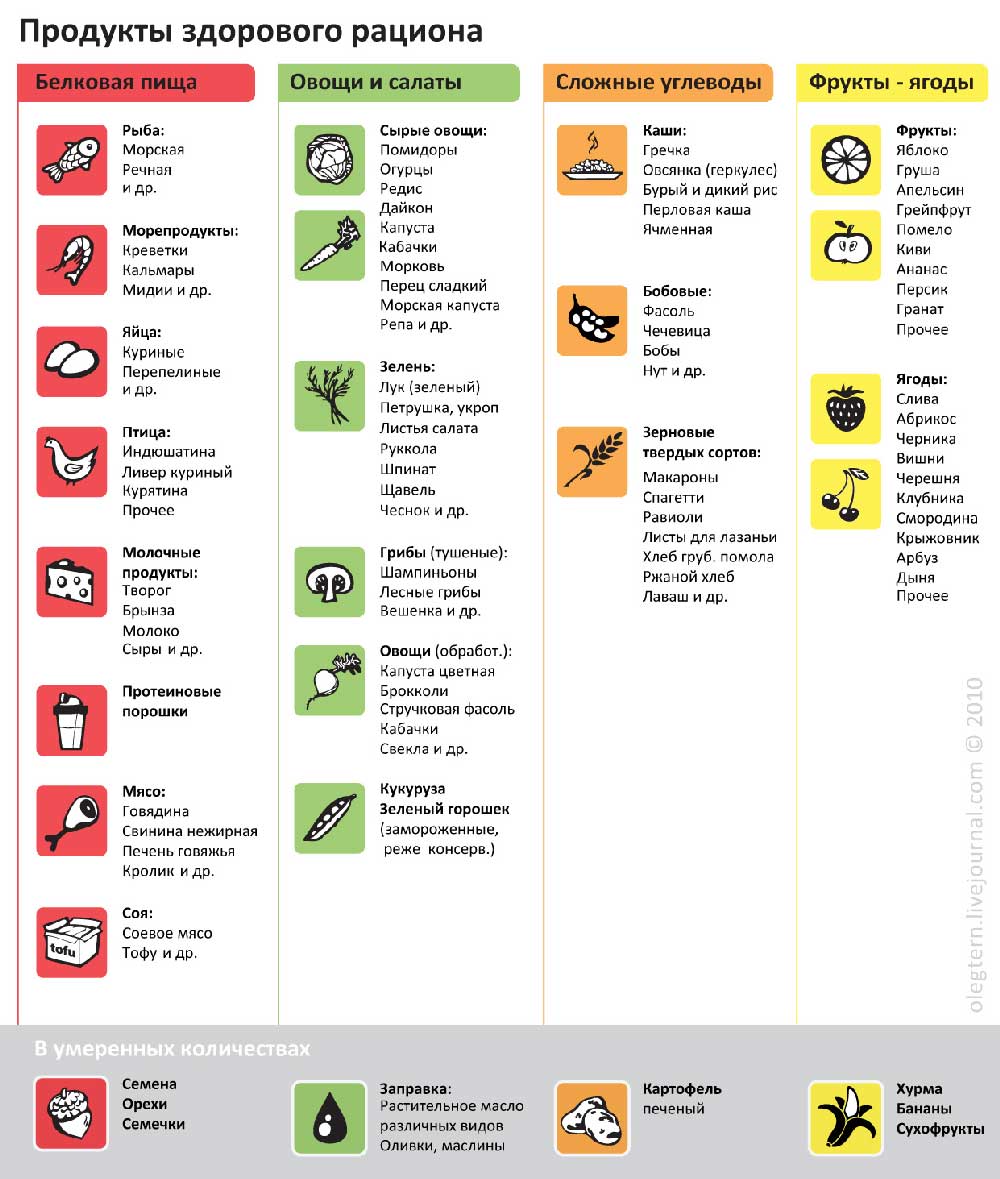
Important points of the diet on cereals:
- You can add dried fruits or fresh fruits, low-fat cheeses and berries;
- you can cook porridge from a mixture of cereals;
- the basis of the dish is water (milk is prohibited!);
- there are no restrictions on the volume of porridges - you do not need to starve;
- salt is added in a minimum amount or better to do without this component.
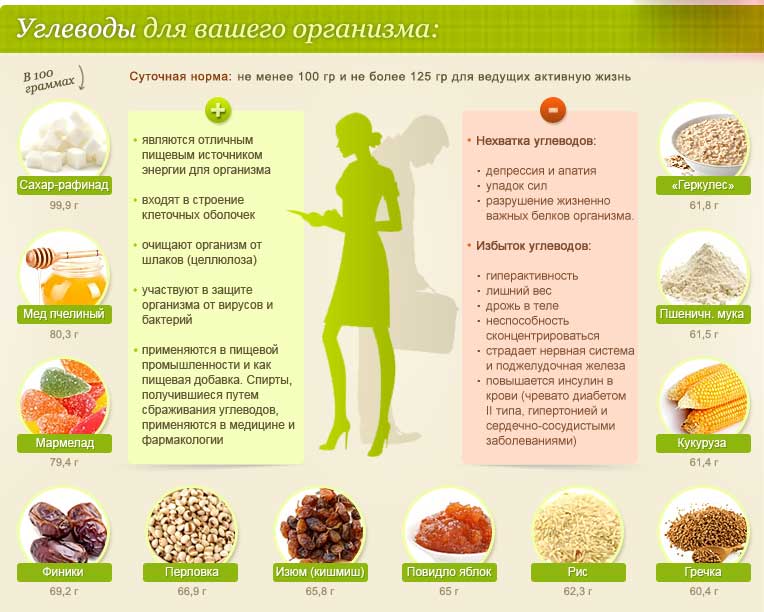
Meaning GI Tables
In modern glycemic index tables, all major products are listed. They are placed according to the degree of decreasing GI.
Based on this table, you can create your own list, which takes into account all your favorite dishes. For obese people, menu items with an index of no more than 40 units are taken. It all depends on personal preference and taste. Some people like to diversify the menu during the week, others enjoy only a few of their favorite dishes.
The optimal indicators for the amount of consumed carbohydrates in one day should not exceed 100-150 grams. And by 60-70% these are precisely “slow foods” (vegetables, fruits, legumes, and cereals).
It should not be forgotten that bran, flax seeds, almonds, soybeans and beans are leading in fiber content. Starch is most common in buckwheat, barley, oatmeal, corn, and peas.
A safe for GI (value in brackets):
- parsley and basil (5);
- white cabbage and broccoli (10);
- mushrooms (10);
- walnuts (15);
- tomatoes, radishes, asparagus, Bulgarian pepper (15 each);
- black currant (15);
- olives and fresh cucumbers (20 each);
- apples, peaches, dried apricots (30 each);
- low-fat cottage cheese (30);
- lentils (35);
- whole-wheat pasta (38);
- buckwheat and white beans (40 each);
- crab meat (40);
- whole grain bread and Borodino bread (45 each);
- oatmeal (49).
Meals should be complete! Disruption of carbohydrate balance can provoke depletion (rebirth) of the liver, as well as violations in the breakdown of proteins and fats.




